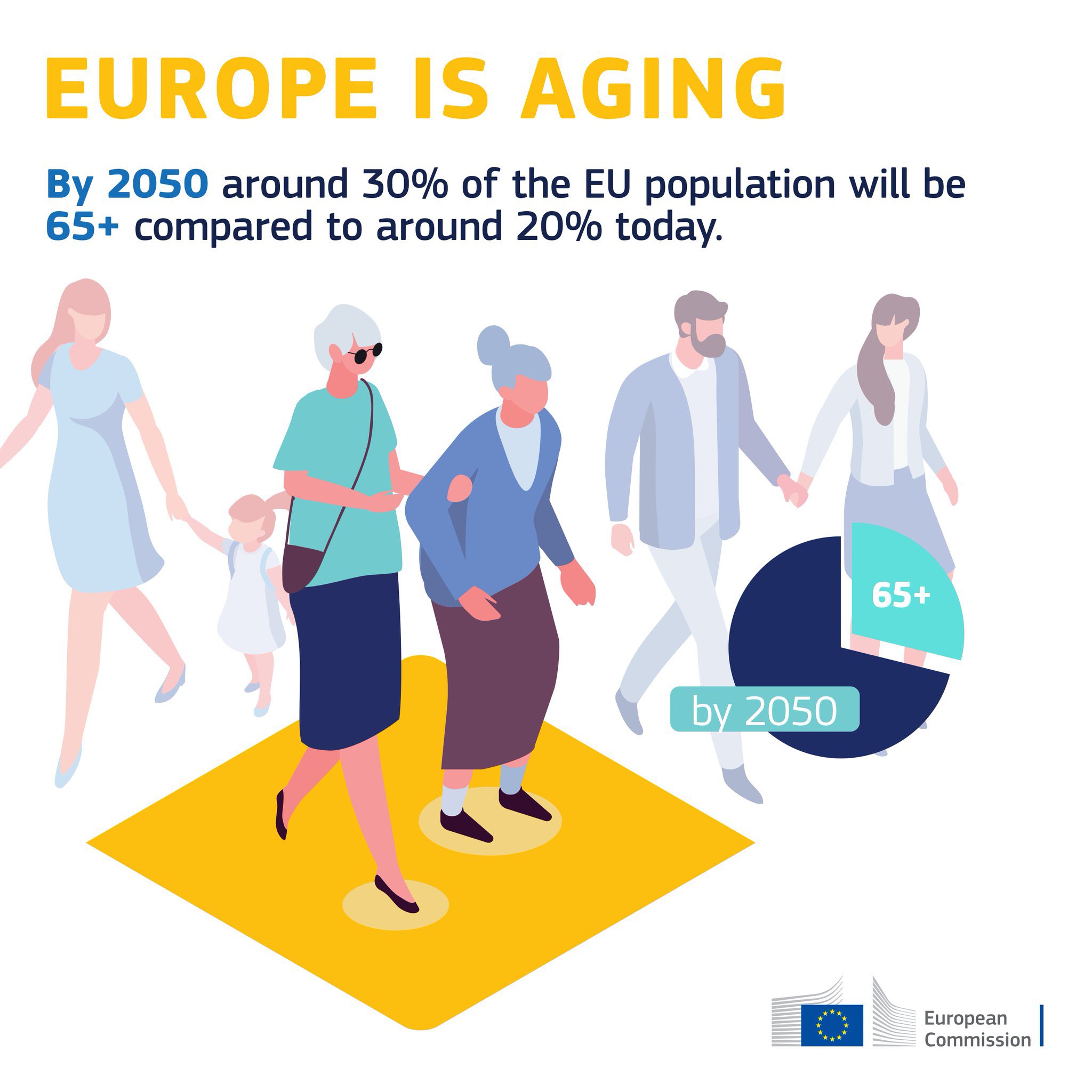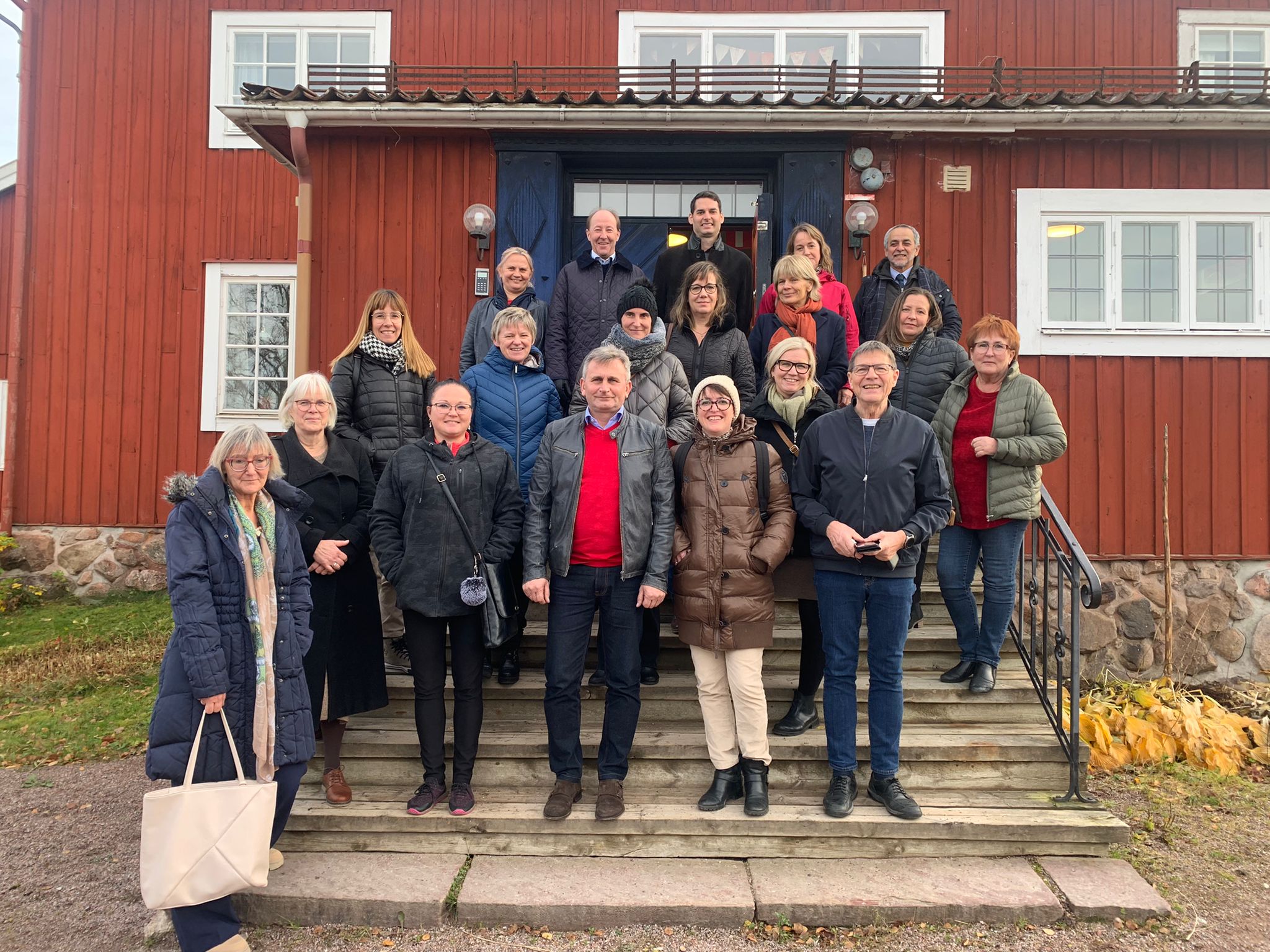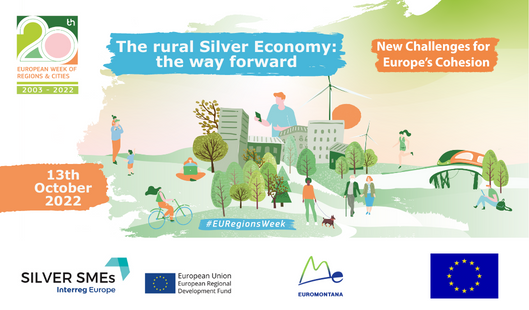Rural Europe is ageing, but the Silver Economy can be part of the solution. This is the message shared by the European Commission in its “Report on the impact of demographic change – in a changing environment”. Presented by European Commission’s Vice-President Dubravka Šuica, Commissioner for Democracy and Demography, last 17th January, this new version of the report updates the data provided by the first edition in 2020.
Rural regions are more affected by demographic changes
The European Commission’s report shows that rural areas are often more impacted by demographic changes. Rural territories for instance face more depopulation decline, due to natural population decline and rural migration especially from women and young people.
Europe as a whole is also ageing. In 2021, people aged 65 and above represented 20.8% of the EU population. Yet, due to out migration and to the sometimes-poor attractiveness of some rural territories, rural Europe is also overall ageing faster than other areas.
The Silver Economy can deliver on demographic challenges
Faced with these demographic trends, the European Commission's report stresses the importance for rural territories to adapt and respond to the associated challenges. The report highlights, for example, the need to develop health care services and points out the opportunities also offered by e-health.
Most importantly, it is emphasised that demographic change can also bring opportunities to society. The Silver Economy is thus presented as a revitalisation opportunity for rural regions: “an ageing population can initiate positive economic dynamics in certain regions and industries also brings business opportunities in the ‘silver economy’”. The Silver Economy can contribute to improving the life of older adults, especially in remote rural areas. This branch of the economy can become a driver of social cohesion, as it applies to many sectors from housing to leisure, food, and tourism.
Moreover, it can also provide jobs in rural regions facing difficulties to retain workers. In its Communication on “Harnessing talent in Europe’s regions”, released on the same day, the European Commission looks into the difficulties of regions, mostly rural, in recruiting skilled workers and creating jobs. To cope with this challenge, the European Commission’s refers to the Silver Economy as a promising sector to develop regions facing “a talent development trap”. Several territories involved in SILVER SMEs are considered as being facing this “talent development trap”, as they face a decline of their working-age population and a stagnant number of people with tertiary education. This is the case of the Norte region in Portugal, Castilla y Léon in Spain, Slovenia and the region Hauts-de-France in northern France.
The EU Commission for example refers to the “Atención en Red” model developed in Castilla y Léon, Spain, to enable older adults to stay and live in rural areas thanks to digital tools and assisted living technologies preventing them from moving to a nursing home. Also mentioned are the opportunities arising from the tourism sector: while many young people leave rural areas, many retired people move to rural places, where the Silver Economy is an opportunity for businesses, especially in southern Europe. In Portugal, our partner CIM do Ave, directed its actions towards the integration of the Silver Economy in the local tourism offers.
These new publications from the European Commission will be discussed at the SILVER SMEs final conference on 21 February in Brussels. Toma Šutić, in charge of ageing policies within the cabinet of European Commission’s Vice-President Dubravka Šuica, will present how recent EU policies take into account the needs and challenges of rural older adults. The programme and registration form are available on the event webpage!











